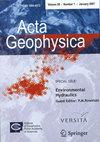The flow regime in geology is critical to the underground activity. In this study, axial seepage tests within a wide range of grain sizes were conducted to better understand the influence of pore size distribution and pore structure evolution on hydraulic characteristics in porous media. The effect of pore size distribution and evolution on flow regime transition was quantitatively analyzed. The pore size distribution was controlled by varying uniformity coefficient (Cu) (4 < Cu < 24) and curvature coefficient (Cc) (0.2 < Cc < 14). The results show that coefficient size appears to have a positive correlation with the permeability of the granular materials, but cannot impact the transition of flow regime that is mainly dominated by the heterogeneity of the pore structure. Compared to the pore space and the effect of medium, the heterogeneity of pore structure significantly impacts on the occurrence of pre-Darcy flow and directly correlates with the magnitude of inertial forces or fluid velocity. It demonstrates that the curvature coefficient (Cc) is an important characteristic parameter in flow transition. The particle size ratio \(\left( {\frac{{d_{60} }}{{d_{30} }}} \right)\) could be considered as one of the reference characteristic particle sizes for assessing non-Darcy flow characteristics. Subjected to the axial stress, the critical hydraulic gradient for the transition from pre-Darcy to post-Darcy flow was reduced, and even the pre-Darcy flow disappeared. These findings will contribute to the identification of non-Darcy flow transition in groundwater and promote a better understanding of the nonlinear evolution behavior of fluids under underground extraction conditions.



